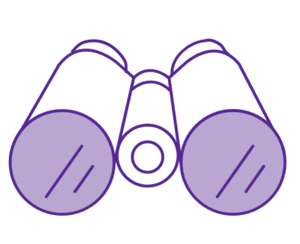
Unintended Consequences
In this workshop groups examine the unintended consequences of new technologies and use those to inspire new potential business opportunities. It looks beyond the common understanding of new technologies, challenging participants to discover unexpected potential and how it might be harnessed. For instance, Instagram was created as a virtual photo album for smartphones, but through the human connection between the people who use it, it has the potential to affect something as deep as our grieving and healing process, as a recent example of this author’s daughter showed.
Goal
Examine the unintended consequences of new technologies and use those to inspire new potential business opportunities.
Materials
Instructions
Step 1:
Organize the participants into groups of 3-5. Introduce the purpose of the activity by telling the story of the hamster from “What is the nature of grieving in the Internet age?” Alternately, participants can read the story themselves.
Explain that the workshop will build on the idea of “unintended consequences” as a starting point for generating new business ideas.
Facilitator notes
This session can be used to simply experiment with and practice ideation methods, or it can be more outcome-oriented, in which the desired outcome is tangible new ideas. Tailor it to your group and the context.
Step 2:
Give groups five minutes to create a list at least five new technologies or businesses, for example, Netflix, Instagram, Google Maps, etc. To add a level of challenge, have participants list only technologies widely used by demographics other than their own. Write them down on post-Its (one per post it).
Step 3:
Next, ask participants to brainstorm: for each of the new technologies or businesses they should speculate on at least three unintended consequences. For example, Netflix was just supposed to be easy and convenient streaming service, but it has led to new behaviours like binge-watching, (watching many episodes of a tv show in one go.)
Encourage the participants to think creatively and stress that there are no right answers. Ask them to write them down on post-Its (one per post-it). After 10 minutes ask them to each group to share their ideas.
Facilitator notes
Depending on the number of post-it’s, group size and time you can adjust how many of the original post-it’s that the groups should speculate around.
Step 4:
In smaller groups, for each of the unintended consequences, suggest a new possible business model. For example, Netflix could invent a new business model where users can watch shows for free if they watch only one episode each day, or pay a premium for their binge behaviour.
When ideating new ideas there are no bad ideas. A new business model might seem worse than the current. That’s ok since the current business model might one day be disrupted by a competitor and suddenly the new ideas make sense.
After 12 minutes ask the group to gather and share their most interesting new business models with the group.
Facilitator notes
Depending on the number of unintended consequences, group size and time you can adjust how many new business models the groups should ideate.
Step 5:
Ask the participants to reflect on the most unexpected and most viable new business model and why? They can also reflect what this exercise thought them about ideation and new business models.
Background
Tool developed and written by: Tom Klinkowstein
Related: “What is the nature of grieving in the Internet age?”
Source: Hyper Island toolbox
Hyper Island designs learning experiences that challenge companies and individuals to grow and stay competitive in an increasingly digitized world. With clients such as Google, adidas and IKEA, Hyper Island has been listed by CNN as one of the most innovative schools in the world



Comments (0)